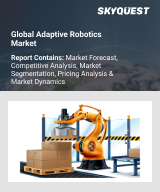
Report ID: SQMIG45A2257

Report ID:
SQMIG45A2257 |
Region:
Global |
Published Date: November, 2024
Pages:
197
|
Tables:
91 |
Figures:
70
Drivers
Wide Adoption of Industry 4.0 and Smart Manufacturing
Increasing demand for Industrial Robots
Restraints
Integration Complexity and Alignment Issues
Costs and Benefits of Investment Information
Our industry expert will work with you to provide you with customized data in a short amount of time.
REQUEST FREE CUSTOMIZATIONWant to customize this report? This report can be personalized according to your needs. Our analysts and industry experts will work directly with you to understand your requirements and provide you with customized data in a short amount of time. We offer $1000 worth of FREE customization at the time of purchase.

Report ID: SQMIG45A2257